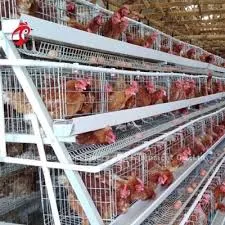Efficient Poultry Plucking Solutions for Commercial Operations and Farms
Nov . 27, 2024 03:54 Back to list
Efficient Poultry Plucking Solutions for Commercial Operations and Farms
The Evolution of Commercial Poultry Pluckers
In the fast-paced world of commercial poultry production, efficiency and productivity are paramount. One of the crucial steps in this process is the plucking of feathers, which has seen significant evolution over the years. The commercial poultry plucker has transformed how poultry is processed, catering to the increasing demand for poultry meat while ensuring a higher quality end product.
Historical Context
Traditionally, plucking chickens was a labor-intensive task, requiring skilled laborers to hand pluck feathers, which could be both time-consuming and inconsistent in quality. This manual method not only increased operational costs but also posed challenges in maintaining hygiene standards. As the poultry industry began to grow, particularly post-World War II, the need for more efficient processes became clear, leading to the development of automated plucking machines.
Mechanical Advancements
The first mechanical pluckers were simple machines designed to expedite the feather removal process. Early models utilized rubber fingers that gently pulled feathers from the birds' skin as they passed through the machine. While these early inventions marked a significant step forward, they faced challenges regarding consistency and the potential for damaging the poultry carcasses.
With advancements in technology, modern commercial poultry pluckers have become more sophisticated. They are designed to be gentle on the chicken while effectively removing feathers. These machines now incorporate various features such as adjustable speed controls, temperature regulation, and improved rubber finger designs to ensure minimal damage and optimal plucking efficiency. Many models are equipped with features that allow for easy cleaning and maintenance, addressing some of the hygiene concerns traditional methods faced.
Impact on Productivity
commercial poultry plucker

The integration of commercial poultry pluckers has dramatically increased the productivity of poultry processors. A single modern plucker can remove feathers from hundreds of birds per hour, drastically reducing processing time compared to manual methods. This increase in efficiency not only allows for faster turnaround times but also reduces labor costs and minimizes the risk of human error.
Moreover, consistent feather removal ensures a higher quality product for consumers. With less damage to the skin and meat, the end product is not only more visually appealing but also easier to prepare for cooking. This consistency has made poultry more appealing to retailers and consumers alike, reinforcing the importance of investing in advanced plucking technology.
Environmental Considerations
As the poultry industry faces growing scrutiny over its environmental impact, the design and operation of commercial poultry pluckers have also evolved to address sustainability concerns. Modern plucking machines are often more energy-efficient and can be utilized in systems that recycle water, thus minimizing waste and resource consumption. Additionally, advancements in technology have led to machines that produce less noise and are more ergonomically designed, improving working conditions for employees.
Future Developments
Looking forward, the future of commercial poultry pluckers lies in continued innovation. With the rise of automation and artificial intelligence, there is potential for further enhancing the efficiency of these machines. Robotics could take on more roles in the poultry processing line, improving accuracy and reducing the labor force needed. Additionally, ongoing research into sustainable practices and materials means that future machines could not only be more effective but also more environmentally friendly.
Conclusion
In summary, commercial poultry pluckers have undergone significant advancements, transforming the poultry processing industry. From labor-intensive manual methods to efficient automated systems, these machines have enhanced productivity, quality, and sustainability in poultry production. As technology continues to evolve, we can expect even greater innovations that will help shape the future of poultry processing, ultimately benefiting producers and consumers alike. The journey of commercial poultry pluckers is a testament to the industry's adaptive nature and its commitment to meeting the ever-growing demand for high-quality poultry products.
-
Automatic Feeding Line System-Pan Feeder Nipple Drinker|Anping County Yize Metal Products Co., Ltd.
NewsJul.29,2025
-
Hot Sale 24 & 18 Door Rabbit Cages - Premium Breeding Solutions
NewsJul.25,2025
-
Automatic Feeding Line System Pan Feeder Nipple Drinker - Anping County Yize Metal Products Co., Ltd.
NewsJul.21,2025
-
Automatic Feeding Line System Pan Feeder Nipple Drinker - Anping County Yize Metal Products Co., Ltd.
NewsJul.21,2025
-
Automatic Feeding Line System - Anping Yize | Precision & Nipple
NewsJul.21,2025
-
Automatic Feeding Line System - Anping Yize | Precision & Nipple
NewsJul.21,2025






